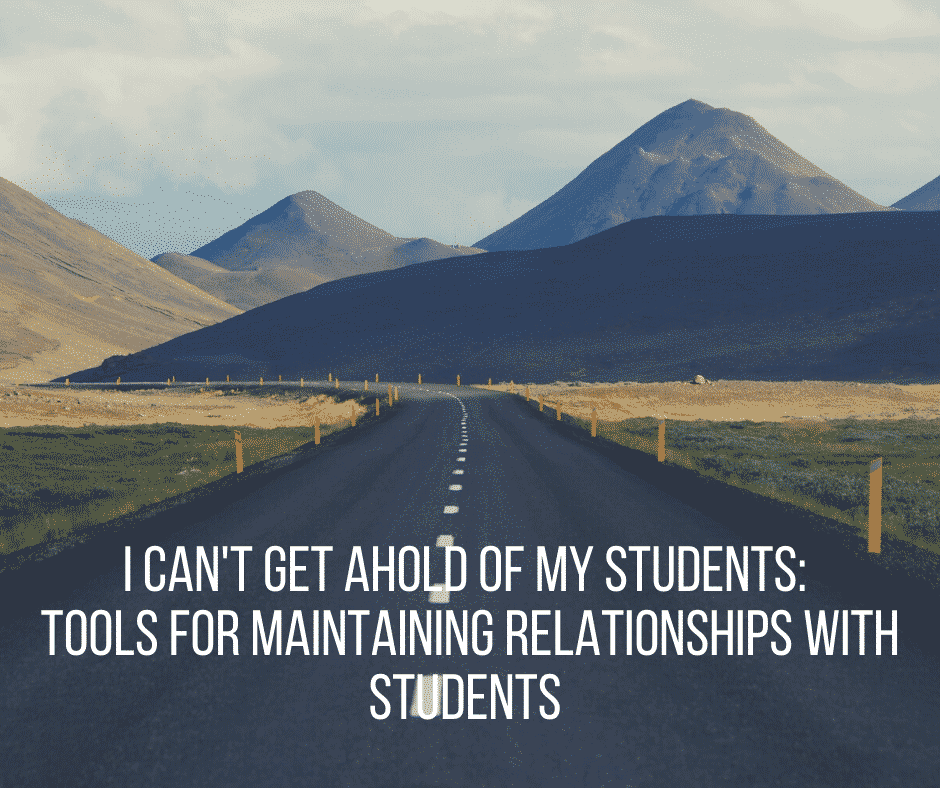Teachers around the world are missing their students. We miss being in the classroom and getting to connect with real students in real-time. Every district has its own plan for when they will return to classes and some are even going back sooner rather than later. But what do we do during this time to maintain relationships with our students?
The inequitable access to technology makes it difficult for students to connect with their teachers and classmates during this time. Some students have access to technology, while others have no access whatsoever. Even students who have access to technology might not have the home support to connect to school. Depending on the situation of the student, here are a few suggestions for teachers to try to stay in touch.
For Students with Varying Access to Technology
Video call
Students can join a video call (even with just a parent’s cell phone) with their teacher and classmates. Aside from academic check-ins, considering doing a short Morning Meeting or Morning Circle with the students that are able to show up. Create different topics to discuss and play easy games with each other. Some teachers have even done virtual talent shows!
Students connecting with their classmates in real-time will remind them they aren’t alone and that they still belong to an important group of people.
Check-Ins/Morning Meeting on Flipgrid
Flipgrid is a very useful educational tool involving video responses. The teacher creates a video topic and students respond with videos. Students can also record video responses to other students. There is no time limit and is a good option for students to stay in touch with limited technology access. Many teachers already use it as a way for students to connect globally with other students or do assess academic knowledge, but using it for connecting with each other is another great use of the tool.
Whatsapp Chat
Most of us are terrified of the idea of parents having our phone numbers. However, desperate times can make us rethink our boundaries. For students who only have access to technology through a parent’s cell phone, consider using Whatsapp to communicate with families. A great portion of the world already uses Whatsapp, which has features like group chat and a silencing option. You can create a group of willing parents who have cell phones and then silence the chat. This means you will receive the message but there will be no notification. This way you can send students short video prompts asking them to send one back to connect with other students or simply send academic reminders. Remember to set hours for when you will respond in the chat and only respond during those hours.
Students with No Access to Technology
Send a Letter/Postcard
Some schools have already been sending academic work packets home by mail for students to complete. If you have confirmation that the addresses for your students are correct and the packets have arrived, consider sending your students a personal letter (or a postcard, it’s cheaper!) in the mail. This is a good option for teachers who don’t have a large number of students.
Socially Distanced Home Visit
Some schools already have home visits in place as a normal part of their school culture. Consider asking parents if you can drive by to wave at your student. You might even ask if it is ok to bring some sidewalk chalk to write a short message for your students, or tape a note to their door. Students will appreciate your effort and it will make you feel good to have been able to reach out.
Phone Call/Voicemail
Most people these days have a phone number, though sometimes parents don’t answer or are unavailable. If there is an option, leave a voicemail for your student. Tell them you’re calling to see how they are and ask them a question. It can be personal or academic, but it might get them to reach out to you.
Volunteer to Hand out Meals
Many schools are handing out grab and go meals. If teachers are allowed to volunteer at your school, consider volunteering if it feels safe for you to do so. It is an opportunity to see students and feel connected to the school community.
Whatever you are able to do, remember that your efforts right now matter more than you think they do. All of us have different situations and capabilities, so anything you do to try and maintain the connection with students is enough and is having an impact.






